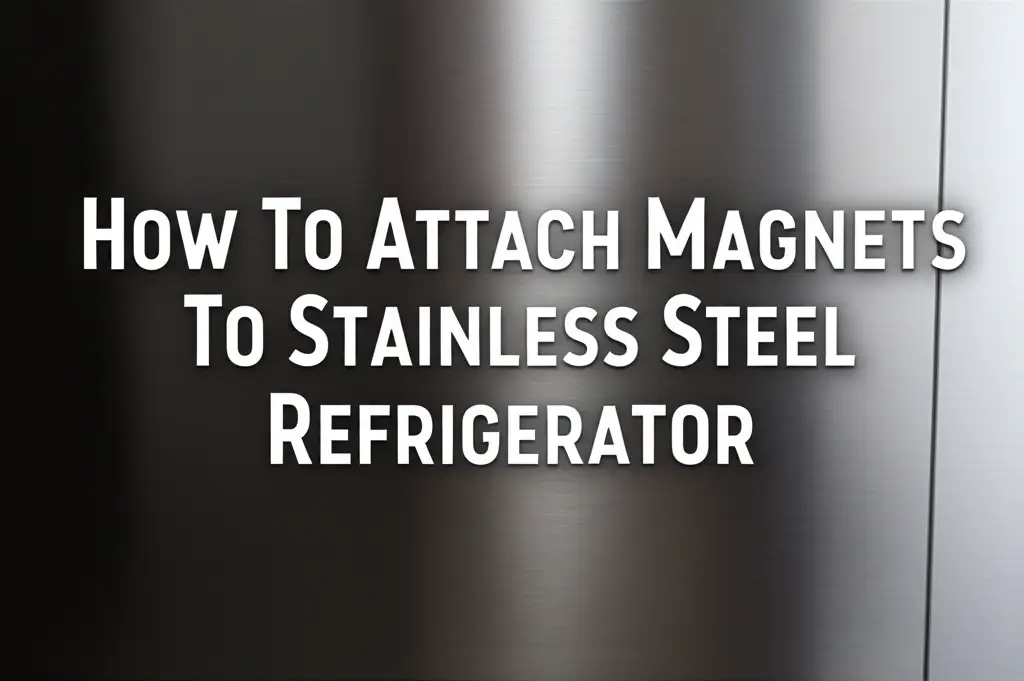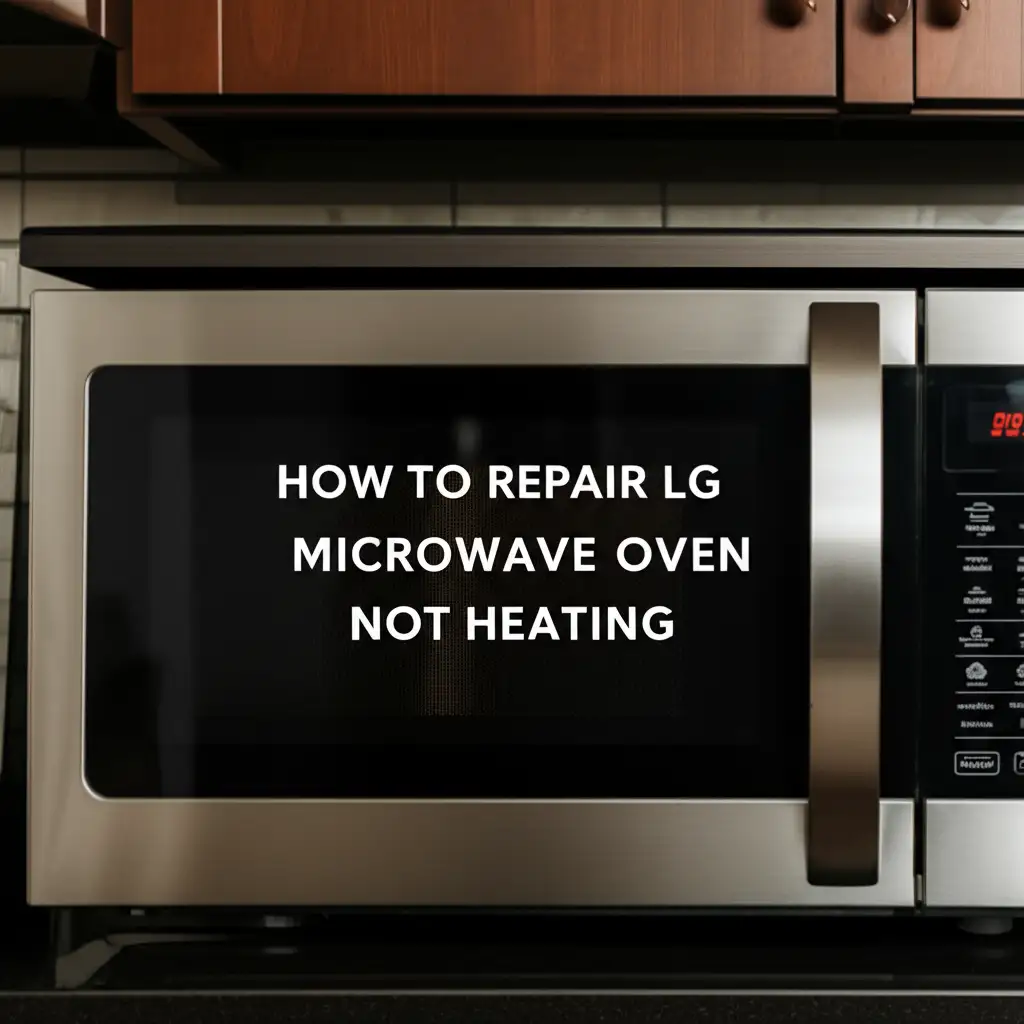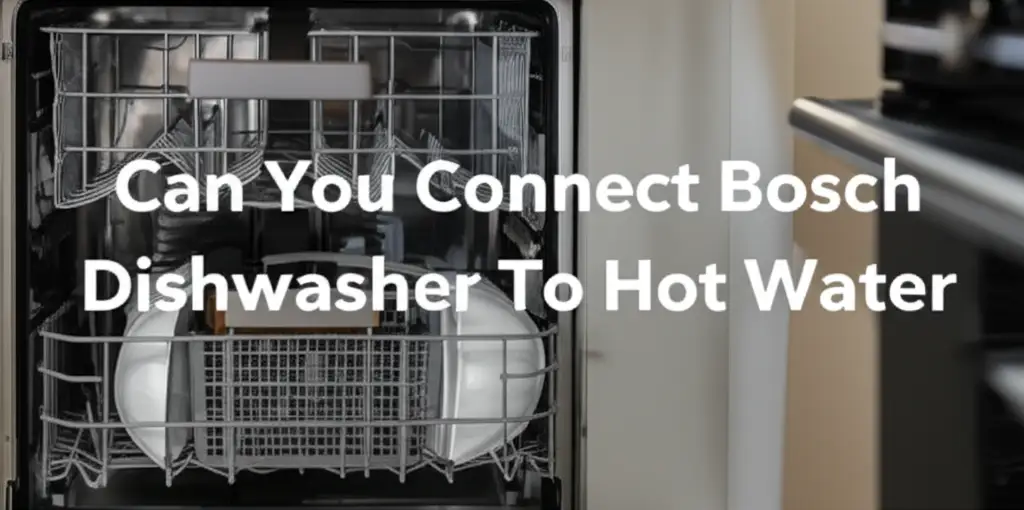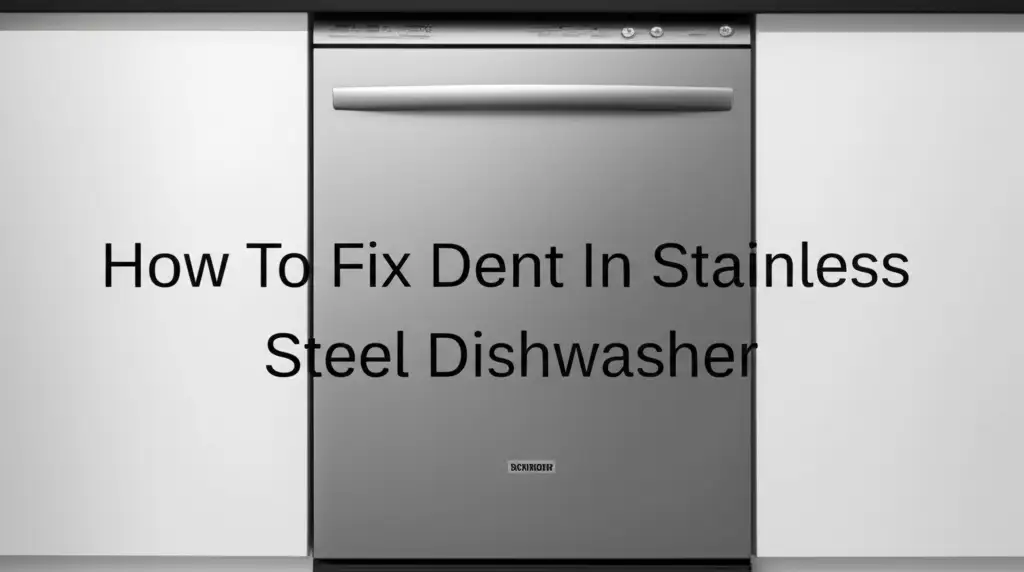· Todd Martin · Home Appliances · 20 min read
How To Attach Magnets To Stainless Steel Refrigerator

Unlock Magnetic Potential: How To Attach Magnets To Stainless Steel Refrigerator
Are you wondering how to attach magnets to stainless steel refrigerator doors that seem to defy magnetic attraction? Many of us love the sleek look of a stainless steel fridge. We also want to personalize it with photos, notes, and kids’ artwork. The good news is that even if your stainless steel refrigerator isn’t magnetic, you still have many great options. You can easily add magnetic functionality and decorative flair.
This article will guide you through understanding why some stainless steel is non-magnetic. We will then explore various safe and effective methods to attach magnets to your stainless steel refrigerator. You will learn about innovative solutions like magnetic sheets, adhesive-backed options, and even clever hacks to turn your fridge into a display hub. Get ready to transform your kitchen space.
Takeaway
- Understand Material: Learn if your stainless steel is ferromagnetic (magnetic) or austenitic (non-magnetic).
- Safe Adhesion: Use non-damaging adhesives and magnetic strips to protect your fridge surface.
- Creative Solutions: Explore magnetic paint, magnetic wallpaper, or strong adhesive magnets for non-magnetic fridges.
- Proper Care: Follow cleaning guidelines to maintain your refrigerator’s finish.
To attach magnets to a stainless steel refrigerator, first test its magnetism. If non-magnetic, use adhesive-backed magnetic sheets, magnetic primer paint, or strong double-sided tape designed for appliances. Always ensure the chosen method is safe for your refrigerator’s finish.
Understanding Your Stainless Steel Refrigerator’s Magnetic Properties
It can be surprising when you try to stick a magnet to your new stainless steel refrigerator and it just slides off. Many people assume all metals are magnetic, but that’s not always true. Stainless steel is a metal alloy, meaning it is a mixture of different elements. Its magnetic properties depend on its specific composition and manufacturing process.
Most stainless steel refrigerators use a type called austenitic stainless steel. This type contains higher amounts of chromium and nickel. These elements make the steel corrosion-resistant and durable. However, they also alter its crystalline structure. This specific structure is non-ferromagnetic. This means it does not attract magnets. This is a common reason why your magnets do not stick. Some stainless steel, known as ferritic or martensitic, does contain enough iron in the right structure to be magnetic. These types are less common in modern appliance exteriors. Knowing the type of stainless steel on your fridge helps you choose the best magnetic attachment solution. You can easily test your fridge with a common kitchen magnet. If it sticks, you have a magnetic surface. If it slides off, your fridge is likely made of non-magnetic austenitic stainless steel. This distinction is crucial for deciding your next steps. For a deeper dive into why your fridge might not be magnetic, you can read our article on why is my stainless steel refrigerator not magnetic.
Manufacturers choose austenitic stainless steel for its superior corrosion resistance and aesthetic appeal. This material resists rust and stains better than magnetic stainless steel. This makes it ideal for kitchen environments. The aesthetic appeal of a sleek, brushed finish also contributes to its popularity. However, this choice comes with the side effect of reduced magnetic attraction. Do not worry if your fridge is non-magnetic. There are still many simple and effective ways to add magnetic functionality. We will explore several creative solutions that allow you to customize your fridge without damaging its beautiful finish.
The lack of magnetism is a design choice, not a flaw. It highlights the manufacturer’s priority for durability and appearance over magnetic convenience. This means traditional fridge magnets will not work directly on the surface. But this also opens up opportunities for more deliberate and often more aesthetic magnetic solutions. Instead of randomly placed magnets, you can create organized display areas. This situation encourages a more thoughtful approach to fridge decoration. This is a chance to be creative with your kitchen space.
Why Attaching Magnets Can Be Tricky (and What to Avoid)
Attaching magnets to a stainless steel refrigerator can be tricky, especially if the surface is non-magnetic. People often try strong adhesive magnets or supergluing magnets directly to the surface. These methods can cause damage or be ineffective. Superglue and other permanent adhesives can leave unsightly residues or even pull off the finish if you ever try to remove them. This type of damage can be permanent. It can affect the look and value of your appliance.
Another common mistake is using magnets that are too weak. Many decorative magnets are designed for older, magnetic fridges. They might not have the strength to hold items on a surface that has a weak magnetic pull or needs an intermediary magnetic layer. These magnets will simply slide down or fall off. This can be frustrating and ineffective. Avoiding these common pitfalls helps protect your appliance. It also ensures your magnetic solutions work as intended.
You should never use abrasive materials or harsh chemicals to clean adhesive residue from stainless steel. This can lead to scratches or discoloration. If you accidentally get adhesive on your fridge, refer to guides on how to clean stainless steel refrigerator or how to clean stainless steel for safe removal methods. It is important to remember that stainless steel can scratch. Using tools or substances not designed for it can leave marks. For information on repairing surface damage, you can also check out our guide on can you get scratches out of stainless steel refrigerator.
The key is to select methods that enhance functionality without compromising the refrigerator’s integrity. Think about long-term use and potential removal. This approach ensures your fridge remains pristine. It also allows you to change your magnetic displays easily. Many non-damaging solutions are available today. These solutions offer flexibility and protection for your appliance. Always prioritize methods that are reversible and safe for the surface. This will save you trouble in the future.
Innovative Solutions for Non-Magnetic Stainless Steel Surfaces
When your stainless steel refrigerator resists traditional magnets, it is time for creative solutions. You can still achieve a functional and stylish magnetic surface. These methods create a new magnetic layer on your fridge. They allow your favorite magnets to stick easily. This transforms your non-magnetic appliance into a versatile display area.
Magnetic Primer Paint
Magnetic primer paint is a clever way to add magnetic properties to any surface. This paint contains fine iron particles. Once dry, it creates a surface that magnets can stick to. You apply it like regular paint. You can cover it with a topcoat of your desired color. This keeps the look of your fridge consistent. This solution is permanent and strong. It allows for full magnetic coverage on a specific section or the entire door. Ensure proper surface preparation for best adhesion. This option gives you a lot of flexibility in terms of design and coverage.
Magnetic Sheets or Strips
Magnetic sheets or strips are a simpler, less permanent solution. These are flexible, thin materials with a magnetic backing. You can cut them to any size or shape. They come with an adhesive on one side. You peel off the backing and press them onto your fridge. They provide a magnetic surface where you apply them. This is great for creating specific magnetic zones. For example, you can have a strip for keys or a sheet for photos. They are easy to remove later. They do not damage the fridge surface. This makes them a versatile and user-friendly choice. Look for strong adhesive options to ensure they stay put.
Adhesive-Backed Magnetic Boards
Adhesive-backed magnetic boards offer a more robust magnetic solution. These are pre-made boards, often with a decorative finish. They have a strong adhesive on the back. You simply stick them to your refrigerator. They provide a sturdy magnetic surface. They are thicker and more rigid than sheets. This makes them ideal for heavier items. They come in various sizes and styles. This lets you choose one that matches your kitchen decor. They are a good option if you need a specific area for strong magnetic hold. Always ensure the surface is clean before application for the best adhesion.
These solutions provide ways to attach magnets to stainless steel refrigerator. They do not require altering the fridge’s structure. They protect its original finish. Each method offers a different level of permanence and customization. Consider how you want to use the magnetic surface when choosing. This helps ensure the best outcome for your kitchen.
Choosing the Right Magnets and Adhesives
Selecting the correct magnets and adhesives is crucial for success. Not all magnets are created equal, especially when dealing with non-magnetic stainless steel. The adhesive you use also plays a vital role. It must be strong enough to hold, but also safe for your appliance’s finish. Making the right choices prevents frustration and protects your refrigerator.
Types of Magnets
When it comes to magnets, strength matters. Standard souvenir magnets often lack the power needed for non-magnetic surfaces.
- Neodymium Magnets: These are incredibly strong, small magnets. They are often called rare-earth magnets. Their power makes them ideal for holding multiple layers or heavier items. You can find them embedded in hooks, clips, or as standalone discs. A small neodymium magnet can hold surprising weight. If you are creating your own magnetic solution, these are highly effective.
- Ceramic Magnets: These are typically darker and less powerful than neodymium magnets. They are often used in magnetic strips or sheets. They are good for general use, like holding paper or light cards. They are also more affordable.
- Flexible Magnetic Sheets/Strips: These are not strong magnets themselves. They are a magnetic surface you can attach to your fridge. They then allow other, weaker magnets to stick to them. This is a common solution for non-magnetic fridges.
For attaching items to a newly magnetic surface (created by magnetic paint or sheets), most common fridge magnets will work fine. However, if you are directly attaching a magnetic solution to your non-magnetic fridge, you need powerful magnets or, more commonly, strong adhesives.
Types of Adhesives
The adhesive is key for methods like magnetic sheets or custom solutions. It needs to bond well to stainless steel without causing damage.
- Appliance-Safe Double-Sided Tape: Look for heavy-duty, strong double-sided tapes specifically designed for mounting or outdoor use. These often have a foam core for better adhesion to uneven surfaces. They are usually designed to be removable without leaving residue. Command strips are a popular brand. Always check the weight rating and removal instructions.
- Magnetic Tape with Adhesive Backing: This combines a magnetic strip with an adhesive on one side. It is designed for lightweight applications. It allows you to turn non-magnetic items into magnets. You can stick this tape onto a light photo or drawing, then it will stick to a magnetic surface you’ve created on your fridge.
- Construction Adhesives (Caution): For truly permanent solutions, some strong construction adhesives could work. However, these are generally not recommended for appliances. They can be very difficult or impossible to remove without damage. They can also void warranties. Only use them if you are absolutely sure about permanent placement. Test in an inconspicuous area first.
Always clean the stainless steel surface thoroughly before applying any adhesive. Use a soft cloth and a gentle cleaner. This ensures the adhesive bonds properly. A clean, dry surface is essential for maximum adhesion. By choosing the right magnet type for your needs and a safe, effective adhesive, you can successfully attach magnets to stainless steel refrigerator and create a personalized space.
Step-by-Step Guide to Applying Magnetic Solutions Safely
Applying magnetic solutions to your stainless steel refrigerator requires careful planning and execution. Following these steps ensures a smooth application. It also protects your appliance’s sleek finish. Whether you choose magnetic sheets, paint, or other adhesive methods, preparation is key.
Step 1: Clean and Prepare the Surface
Before applying anything, the refrigerator surface must be impeccably clean. Any dust, grease, or fingerprints will prevent proper adhesion.
- Gather Supplies: You will need a soft microfiber cloth, a mild stainless steel cleaner, or a mixture of dish soap and warm water. Avoid abrasive cleaners or sponges.
- Wipe Down: Lightly dampen your cloth with the cleaner. Wipe the area where you plan to apply the magnetic solution.
- Dry Thoroughly: Use a separate dry, clean microfiber cloth to dry the surface completely. Ensure no moisture remains. A clean and dry surface ensures the best possible bond for any adhesive.
Step 2: Test Your Approach (If Applicable)
If you are using adhesive magnetic sheets or strips, it is wise to test a small, inconspicuous area first. This helps confirm the adhesive will stick properly and can be removed without damage later.
- Small Piece Test: Cut a small piece of your adhesive magnetic material. Stick it to the side or bottom of the fridge, in an area not usually visible.
- Wait and Remove: Let it adhere for a few hours. Then, gently try to peel it off. Check for any residue or surface damage. If it comes off cleanly, you are ready to proceed.
Step 3: Apply Your Chosen Magnetic Solution
The application method varies based on your chosen solution.
For Magnetic Sheets/Strips:
- Measure and Cut: Measure the area on your fridge where you want to apply the sheet or strip. Use sharp scissors or a utility knife to cut the magnetic material to size.
- Peel and Stick: Carefully peel back a small section of the adhesive liner from one corner. Align the sheet with your desired placement. Slowly press it down, peeling more of the liner as you go. Use a soft, clean cloth or a squeegee to smooth out any air bubbles. Work from the center outwards.
- Firm Press: Once fully applied, press firmly over the entire surface to ensure good contact.
For Magnetic Primer Paint:
- Masking: Use painter’s tape to mask off the area you intend to paint. This protects surrounding areas.
- Apply Primer: Follow the manufacturer’s instructions for application. Typically, you will apply several thin coats of magnetic primer. Allow adequate drying time between coats. More coats mean a stronger magnetic pull.
- Topcoat (Optional): Once the primer is dry, you can paint over it with your desired color if you want to match your fridge.
Step 4: Allow for Curing Time
Adhesives and paints need time to fully cure and bond. Do not put magnets or objects on your newly applied surface immediately.
- Check Instructions: Refer to the product’s instructions for recommended curing times. This can range from a few hours to 24-48 hours.
- Patience is Key: Waiting for full curing ensures the strongest bond and prevents the magnetic solution from detaching or sliding.
By following these steps, you can successfully attach magnets to stainless steel refrigerator surfaces. This creates a functional and attractive display space. Proper application also helps maintain the longevity and appearance of your appliance.
Decorating Your Stainless Steel Fridge: Creative Magnet Ideas
Once you have successfully added magnetic capabilities to your stainless steel refrigerator, the fun begins. You can now personalize your kitchen space. Go beyond simple notes and turn your fridge into a dynamic display. Creative magnet ideas add character and functionality. They transform a plain appliance into a focal point.
Beyond Basic Functionality
Think of your fridge as a large canvas. You can use magnets to organize, decorate, and express yourself.
- Photo Gallery: Print out your favorite family photos. Attach small, sleek neodymium magnets to the back of each photo. Arrange them in a grid or a free-form collage. This creates a personal and ever-changing display. It is a warm touch in any kitchen.
- Chore Charts and Calendars: Create a dedicated magnetic area for family organization. Use magnetic dry-erase boards or sheets for weekly chore charts, meal plans, or family calendars. Assign magnetic markers for easy updates. This keeps everyone informed and on track.
- Art Display for Kids: Your children’s artwork deserves a prime spot. Use magnetic clips or strong decorative magnets to showcase their latest masterpieces. You can rotate the display weekly to celebrate new creations. This fosters creativity and pride.
- Magnetic Spice Rack: Free up counter or cabinet space by attaching small containers of frequently used spices to your fridge. Use containers with magnetic bottoms or attach strong magnets to the back of small jars. This keeps spices handy while cooking. This also adds a visually appealing element.
- Utensil Hooks: Attach magnetic hooks to your fridge surface. Hang lightweight kitchen utensils, oven mitts, or dish towels. This keeps essentials within easy reach and helps organize your workspace.
- Herb Garden: Small magnetic planters can hold fresh herbs. This adds greenery to your kitchen. It also provides fresh ingredients for cooking. Ensure the planters are lightweight and the magnetic hold is sufficient.
- Inspirational Quotes/Messages: Use magnetic letters or pre-made magnetic quote sets to display daily affirmations or fun messages. Change them often to keep things fresh. This adds a personal touch.
When choosing items to hang, consider the strength of your new magnetic surface. Stronger magnets or magnetic areas can hold heavier items. For lighter items, simpler decorative magnets are sufficient. Remember to clean your stainless steel refrigerator regularly to keep it looking its best, even with magnetic decorations. You can find helpful tips on how to clean stainless steel refrigerator with baking soda or can you use vinegar to clean stainless steel refrigerator. By thinking creatively, you can make your stainless steel fridge both functional and a true reflection of your style.
Maintaining Your Magnetic Solutions and Refrigerator Surface
Once you have successfully applied magnetic solutions to your stainless steel refrigerator, proper maintenance is key. This ensures the longevity of your magnetic setup. It also keeps your appliance looking pristine. Regular care prevents damage and preserves the beauty of your kitchen. Neglecting maintenance can lead to residue, scratches, or weakening of the magnetic bond.
Cleaning Around Magnetic Attachments
Cleaning a stainless steel refrigerator with magnetic attachments requires a bit more care. You want to clean the fridge surface without disturbing the magnetic elements.
- Gentle Approach: Always use a soft microfiber cloth for cleaning. Harsh cloths or abrasive cleaners can scratch stainless steel.
- Mild Cleaners: Opt for cleaners specifically designed for stainless steel. Alternatively, a simple solution of warm water and a small amount of dish soap works well. You can also use vinegar for cleaning your stainless steel refrigerator. For more guidance, see our article on can you use vinegar to clean stainless steel refrigerator.
- Clean with the Grain: Stainless steel has a grain, like wood. Always wipe in the direction of the grain to avoid streaks and minor scratches.
- Spot Cleaning: If possible, remove magnetic items before cleaning the area underneath. This allows for thorough cleaning of the entire surface. If removal is not feasible, carefully clean around the magnetic attachment. Use a cotton swab for tight spots.
- Drying: Always dry the surface immediately after cleaning with a separate, dry microfiber cloth. This prevents water spots and streaks.
Protecting Your Magnetic Attachments
Your magnetic solutions need care to remain effective and attractive.
- Avoid Overloading: Do not put too much weight on magnetic hooks or sheets. Overloading can cause them to peel or slide. This weakens the adhesive bond over time.
- Check Adhesion: Periodically check the edges of magnetic sheets or strips. Ensure they are still firmly attached. If an edge starts to lift, gently press it back down. Re-apply adhesive if necessary, using an appliance-safe option.
- Magnet Care: If you use loose neodymium magnets, keep them away from sensitive electronics, credit cards, or medical devices. Store them safely when not in use.
Preventing Damage to the Refrigerator Surface
The stainless steel surface itself needs protection.
- Gentle Magnet Placement: When placing or moving magnets on your magnetic sheets, avoid dragging them forcefully. Lift and place to prevent potential scratches to the underlying sheet or the fridge finish.
- Handle with Care: If you ever decide to remove a magnetic sheet or strip, do so slowly and carefully. Follow the product’s removal instructions. Some adhesives require heat (like from a hairdryer) for clean removal. For general cleaning tips that protect your stainless steel, check out how to clean stainless steel.
- Address Scratches Promptly: Even with care, accidents happen. If you notice minor scratches, address them quickly. Our guide on can you get scratches out of stainless steel refrigerator offers helpful advice.
By consistently maintaining both your magnetic solutions and the refrigerator’s surface, you ensure a functional and beautiful kitchen for years to come. This attention to detail extends the life of your appliance. It also keeps your personalized magnetic display looking its best.
FAQ Section
Can all stainless steel refrigerators hold magnets?
No, not all stainless steel refrigerators can hold magnets directly. Many modern stainless steel appliances are made from austenitic stainless steel. This type contains higher levels of chromium and nickel, making it non-ferromagnetic. This material resists rust and stains effectively. However, it does not attract magnets. You can test your fridge with a common magnet to see if it sticks.
What is the best way to attach magnets to a non-magnetic stainless steel fridge?
The best way to attach magnets to a non-magnetic stainless steel fridge is by creating a magnetic surface. You can use adhesive-backed magnetic sheets, which stick directly to the fridge and provide a new magnetic layer. Magnetic primer paint is another option. It allows you to paint a section of your fridge that will then attract magnets.
Will strong magnets scratch my stainless steel refrigerator?
Yes, strong magnets can potentially scratch your stainless steel refrigerator if dragged across the surface. This risk is higher if the magnet has sharp edges or picks up debris. Always lift and place magnets gently. If you’ve applied a magnetic sheet, the sheet itself might get scratched, protecting your fridge.
Can I use super glue to attach magnets to my fridge?
Using super glue or other permanent adhesives to attach magnets directly to your stainless steel refrigerator is not recommended. These glues can damage the finish, leaving permanent marks or discoloring the surface. They are also very difficult to remove without causing further harm. Opt for appliance-safe, removable adhesives instead.
How do I remove adhesive residue from my stainless steel fridge?
To remove adhesive residue from your stainless steel fridge, first try rubbing alcohol or a specialized adhesive remover designed for appliance surfaces. Apply a small amount to a soft microfiber cloth. Gently rub the residue with the grain of the steel. Always test in an inconspicuous area first. Avoid harsh scrapers or abrasive cleaners, as these can scratch the finish.
Are magnetic sheets easy to remove from stainless steel?
Most adhesive-backed magnetic sheets are designed for relatively easy removal without damaging the stainless steel surface. Look for sheets that specify “removable” or “repositionable” adhesive. They typically peel off cleanly. If any residue remains, a gentle cleaner or rubbing alcohol can usually take it off. Follow the product’s instructions for the best removal results.
Conclusion
Transforming your stainless steel refrigerator into a functional magnetic display is entirely possible, even if it is not naturally magnetic. We have explored various effective solutions. These include magnetic primer paint, adhesive-backed magnetic sheets, and creative magnetic boards. By understanding your fridge’s material and choosing the right products, you can safely attach magnets to stainless steel refrigerator doors. This allows you to personalize your kitchen space without causing damage.
Remember, the key to success lies in preparation and careful application. Always clean the surface thoroughly before applying any solution. Opt for appliance-safe adhesives and avoid harsh chemicals or abrasive tools. With these techniques, your sleek stainless steel appliance can also serve as a vibrant hub for notes, photos, and family organization. Embrace these innovative approaches to make your kitchen both beautiful and highly functional. Your personalized magnetic fridge is just a few steps away!
- stainless steel magnets
- refrigerator organization
- non-magnetic fridge solutions
- DIY magnets
- kitchen decor





